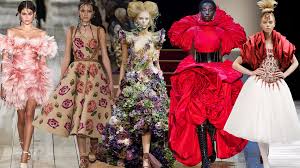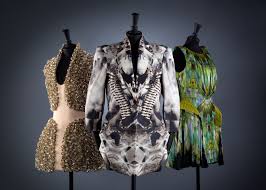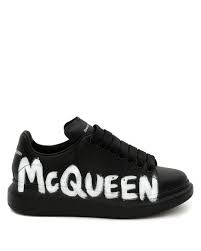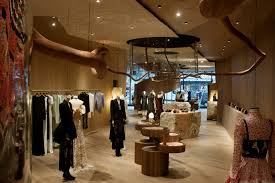
Introduction:
At the height of fashion that goes beyond the norm and challenges traditional boundaries, Alexander McQueen reigns supreme. Universally acclaimed as one of the most groundbreaking and influential fashion designers of our time, McQueen’s name is equated with unbridled creativity, dark romanticism, and masterful craftsmanship. His legacy to the world of fashion extended far beyond apparel—he reinterpreted the definition of fashion as art.
McQueen’s innovative designs and avant-garde presentations pushed the limits of what fashion could be, turning his runway shows into performances that mixed art, theater, and high fashion. As a visionary, McQueen saw fashion as an emotional experience—one that told stories, challenged norms, and stirred deep reflection. Even after his tragic death in 2010, McQueen’s legacy continues to resonate in the fashion world, influencing generations of designers, artists, and cultural movements.
In this article, we discuss the artistry, creativity, and lasting legacy of Alexander McQueen, noting how his contributions to the fashion world remain unparalleled, catapulting him to the level of an eternal icon.
The Early Life and Rise of Alexander McQueen
Lee Alexander McQueen was born on March 17, 1969, in Lewisham, London. The child of a taxi driver and a social science teacher, McQueen grew up in a working-class family that would later be reflected in his designs with a combination of street-level grittiness and high-level sophistication. His childhood was spent fascinated by fashion, frequently releasing his creativity through drawing and designing.
McQueen’s fascination with fashion took him to study at Savile Row, where he apprenticed at the famous tailor Gieves & Hawkes. This early experience of tailoring, the art of making perfectly cut, expertly structured clothing, would go on to influence McQueen’s own style of perfectionistic craftsmanship married with revolutionary design.
In 1992, McQueen joined the Royal College of Art, where he was taught by fashion icon Ruskin School of Art. Isabella Blow, a leading fashion editor, purchased his graduate collection, and he became her early patron and muse. Blow’s patronage thrust McQueen into the spotlight and was the reason behind his transition into high fashion.

A Revolutionary Designer: Alexander McQueen’s Iconic Collections
Theatrical and Daring Designs
McQueen’s sense of fashion was far from traditional. His dramatic catwalk displays blurred the boundaries between art, theater, and fashion. They became integral to his brand. His collections were not merely about garments but a visual display that came with an examination of themes in society, humankind, and the power of fashion to influence culture.
His 1995 collection, “Highland Rape”, is one of his most famous and provocative shows. McQueen created a collection of clothes that referred to his Scottish heritage, utilizing ripped fabrics and coarse, aggressive cuts. The collection was an investigation into the emotional effect of violence and the complicated history between Scotland and England. It created a lot of controversy, as the designs portrayed sexual violence, demonstrating McQueen’s skill for evoking emotion and challenging thinking through his apparel.
In 1998, McQueen’s “Voss” collection was another daring departure from traditional fashion. The show started with a set that was inspired by a mental institution and featured live butterflies flying around models in bloodied attire. The eerie imagery was a metaphor for inner conflict, beauty, and vulnerability. It was obvious that McQueen was not merely creating clothing—he was making stories that challenged the lines between art and fashion.
The Iconic “Savage Beauty” Collection
Some of McQueen’s most famous work is his Savage Beauty collection, which was on display at the Metropolitan Museum of Art in 2011, a year after his passing. This show, celebrating the designer’s life and career, honored McQueen’s vision in a fully immersive event. From the eerie skull theme to the extreme attention to detail in his couture designs, McQueen’s work was proof of his passion for artistry and perfection.
McQueen’s “Bumster” pants are also iconic—introduced in his Spring/Summer 1996 collection, the trousers featured an exaggerated low-rise, shifting the focus of women’s fashion from waistlines to the lower body, challenging traditional notions of beauty. This signature move became a hallmark of McQueen’s work, as he constantly sought to explore and redefine the body’s silhouette.

Innovating Fashion: The Role of Technology and Craftsmanship
One of the most revolutionary things McQueen did was marry traditional craftsmanship with technology. As a master tailor, he took personal care of every detail, from choosing the fabric to the last fitting. Yet, McQueen never hesitated to adopt new technology in his designs.
McQueen employed laser-cutting technology in his Spring/Summer 1999 collection to produce elaborate, patterned plastic dresses. This blending of the ancient craft of tailoring with cutting-edge technologies distinguished him from other designers and reflected his perpetual need to break the rules in fashion.
Another highlight of McQueen’s technological advancements was his work with Nick Knight for the “Plato’s Atlantis” collection in 2010. The fashion show included digitally produced snake graphics, digital prints on clothing, and holographic displays. The collection not only showcased McQueen’s visionary mindset but also emphasized his skill in integrating technology with fashion to deliver lasting visual experiences.
McQueen’s Iconic Legacy: A Fashion Visionary
Although McQueen’s life was cut short in 2010 in a tragic accident, his impact still resonates throughout the fashion world. McQueen’s brand is currently being led by creative director Sarah Burton, who had been working with him for many years. Burton’s subtle, yet forceful, designs have carried on McQueen’s legacy, mixing the dark, avant-garde look of the brand with a more sophisticated and contemporary sensibility.
In McQueen’s collection “Spring/Summer 2011” under Burton’s reign, the collection was an immediate classic as the designer honored McQueen’s imagination with a progression of sculpted gowns and detailed tailoring. Burton’s vision honors McQueen’s innovative work in fashion while introducing her own subtle meanings.
Aside from his revolutionary designs, McQueen’s own life story has become part of his legacy. Famous for being open about his mental illness and for his fiery temper, McQueen encouraged a great many people in the world of fashion to embrace their own frailty and uniqueness.
Alexander McQueen’s Cultural Impact and Relevance Today
The international reach of Alexander McQueen goes far beyond the limits of fashion. McQueen’s designs have been honored in museums, galleries, and cultural institutions across the globe. His creations are not only regarded as apparel, but as works of human imagination, breaking the limits of self-expression and providing commentary on the world’s most significant problems.
His legacy is apparent in how current designers now respond to fashion. McQueen’s dedication to fashion’s provocation and its telling of compelling stories has inspired other designers like Riccardo Tisci, Virgil Abloh, and Hedi Slimane. These fashion designers have translated McQueen’s teachings on brash expression and innovative styling to their designs and made his legacy be known generation after generation.
Additionally, McQueen’s name remains synonymous with luxury, rebellion, and sophistication. His work remains among the most sought after and iconic in fashion, prized by collectors and fashion enthusiasts alike. His work continues to influence the vocabulary of fashion and inspire both up-and-coming and veteran designers.

Conclusion: McQueen’s Enduring Legacy
Alexander McQueen’s legacy to the world of fashion will always be one of the greatest and most impactful of all time in the history of the industry. With his remarkable craftsmanship, experiments with new silhouettes, and exploration of the darkest emotions of humanity, McQueen transformed fashion from attire to a genre of storytelling and art. McQueen revolutionized the world of fashion by going against conventions, questioning the concepts of beauty, and embracing uniqueness.
Since his death in the years that have followed, Alexander McQueen’s legacy has only strengthened. His impact is still felt across all areas of fashion, from the catwalk to the high street. McQueen is not merely a designer; he is an icon whose vision will continue to resonate in the hearts of anyone who is brave enough to push the boundaries of creativity and self-expression.
The story of Alexander McQueen serves as an indication of the transformative power of imagination, courage of innovation, and legacy of the artist who overcame frontiers in the context of fashion.
